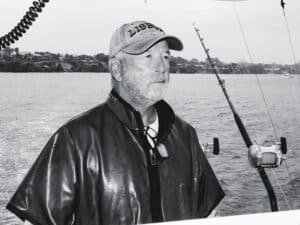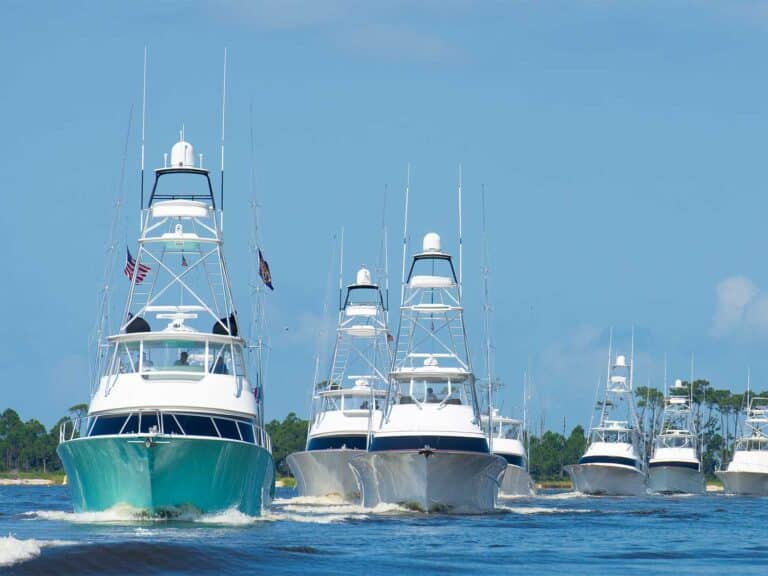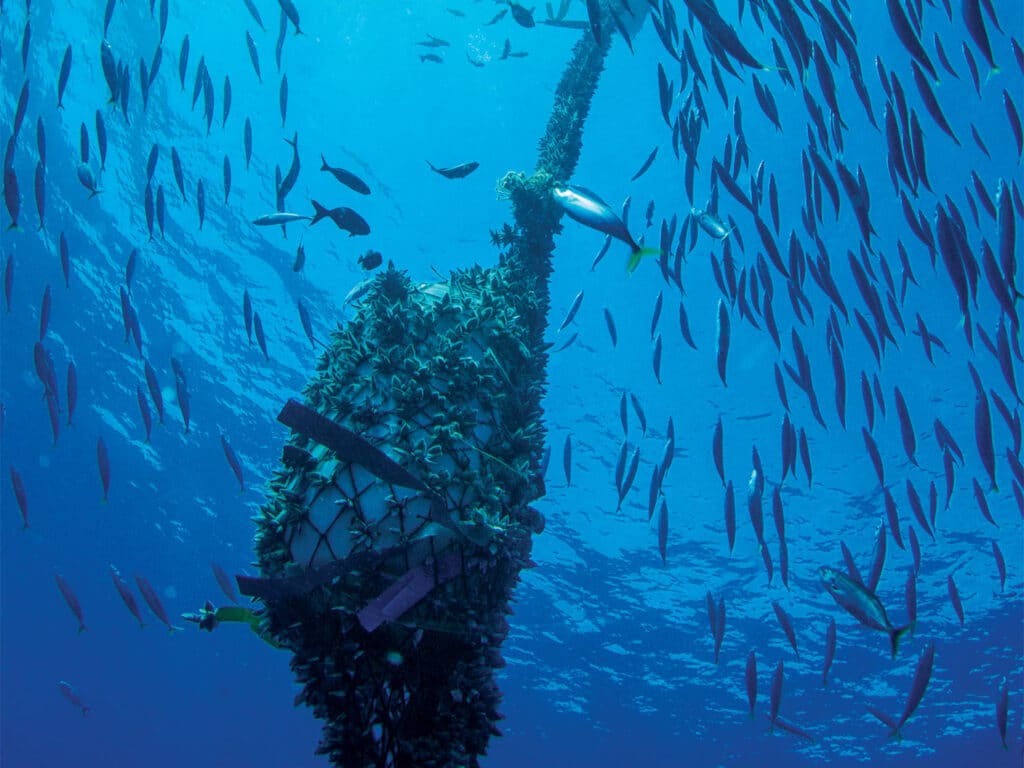
Special delivery: Sign up for the free Marlin email newsletter. Subscribe to Marlin magazine and get a year of highly collectible, keepsake editions – plus access to the digital edition and archives.
Tens of thousands of years ago, our ancestors took to the ocean in search of food. Since that time, we have become increasingly aware of the innate behavior of certain species of fish, and especially their attraction to floating objects. Ancient texts from the Roman Empire explain how bunches of floating reeds tied together could produce large schools of mahimahi within rowing distance of shore. The knowledge of how to fish around specific floating logs has been passed down for many generations in Pacific Island communities, and even the average weekend angler is aware a weed line or floating piece of trash can produce fish. With the knowledge that many offshore species share an affinity for floating objects, it didn’t take long for people to start building their own fish aggregating devices, or FADs, in order to produce more productive fishing.
So exactly what is a FAD? A FAD is any man-made object placed into the water with the intent of increasing the density of fish in an area. There are two main types: drifting FADs, which are not attached to the bottom and float freely with the currents, and moored, or anchored, FADs, which are attached in a specific location, meant to be permanent or at least semipermanent, and made from a wide variety of natural and man-made materials. Throughout history, the most common materials used for FADs are those that are readily available and inexpensive, such as palm fronds, reeds or bamboo. In more recent years, modern materials and technological advancements have allowed for more-permanent structures; some commercial fleets even attach echo-sounder buoys and small motors to drifting FADs so they know how many fish are beneath and can effectively drive them where they want. The recreational fishing community was a bit late to the party when it came to implementing FADs but has caught up at a rapid pace where they have become more common among recreational billfish and tuna anglers around the world over the past few decades. The recreational community has also taken the FAD concept in some new directions, such as deploying moored FADs below the surface where only they know the location. With the prevalence of FADs in both commercial and recreational fisheries, the scientific community has taken notice and begun to learn how they may impact fish species and the environment. But there is still a long way to go.
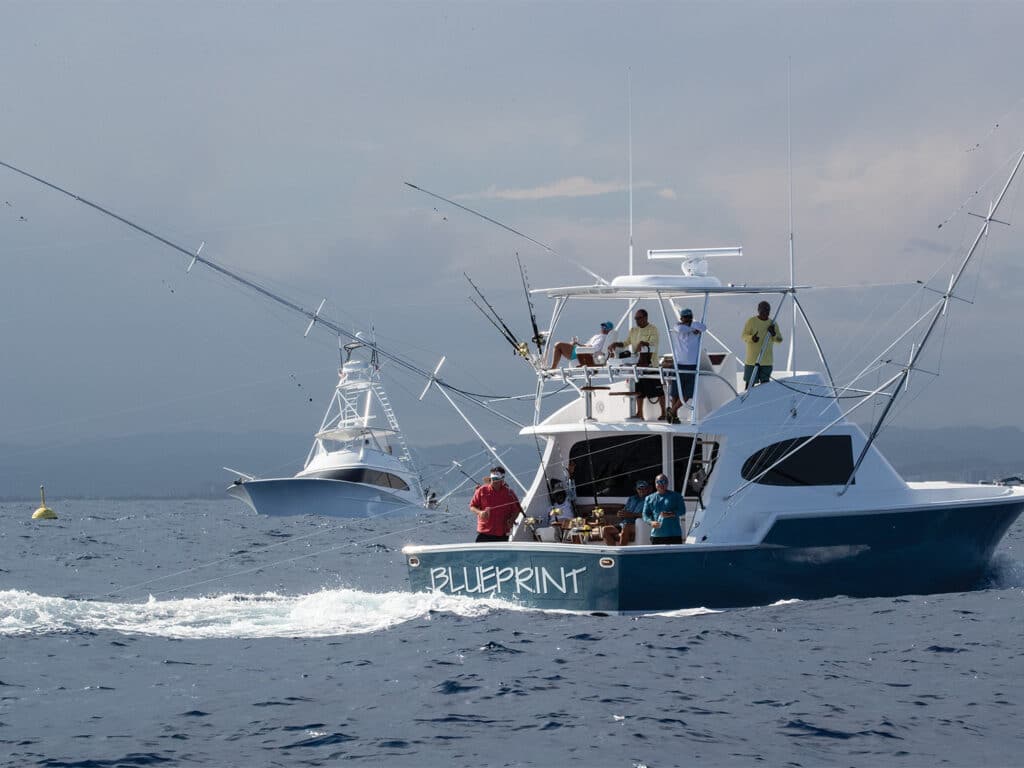
The Science and Theories
Why are fish attracted to FADs? This question is far from a simple one. There is a large diversity of fish species—from many levels of the food chain—that aggregate around FADs. It is likely that there is no single explanation for the aggregation behavior. In fact, research on fish behavior relative to commercially deployed FADs is a top priority for international fishery-management agencies. Although the science isn’t yet completely clear, there is a list of concepts and theories about why fish are drawn to FADs.
Let’s start with various species of tunas—the primary target for a vast majority of FAD-related commercial fishing and the source of most of our scientific knowledge on FAD impacts. Tunas are schooling fish of significant importance to the world’s fisheries that are captured in significantly higher numbers in purse-seine fisheries that employ FADs rather than sets on schools that are not associated with FADs. There is evidence that the dynamics of the tuna school change when near a floating object. Historically, floating objects meant natural logs or debris and sometimes large animals such as whales or whale sharks. Now, commercial and recreational anglers all recognize the potential for high catch rates when using FADs. The use of FADs in commercial fisheries operating in all major oceans has steadily increased since the early 2000s; there are now approximately 7,000 actively deployed each day, while Pew has reported that over 120,000 FADs are used annually in tuna fisheries. Globally, tropical tunas caught on FADs represent almost half of the nearly 5 million tons of tuna caught each year.
Sharks, sea turtles, tunas, blue marlin and small pelagic species are all known to associate with FADs. Research has found that fish schools under a FAD can be separated by their preferred distance to the FAD itself. Some, typically smaller species, remain within a few inches of the FAD. Then there are species that remain within about 6 feet, and finally, there are the predatory species that range between 6 feet and several miles from the FAD. Research has discovered skipjack and yellowfin seem to have a preference to stay in larger schools around the FAD during the day and sometimes spread out at night, presumably taking feeding excursions away from the FAD. The skipjack and juvenile yellowfin tuna of a similar size range dominate the commercial catches under FADs in all oceans, and they seem to have extremely high fidelity to the FAD, returning to it from up to 6 nautical miles away. Bigeye are also caught in purse-seine sets around FADs, but to a much lesser degree. Similarly, blue marlin are highly FAD-associated in some regions, while sailfish, a more coastal species, do not seem to show as strong a preference, especially when FADs are located far from shore.
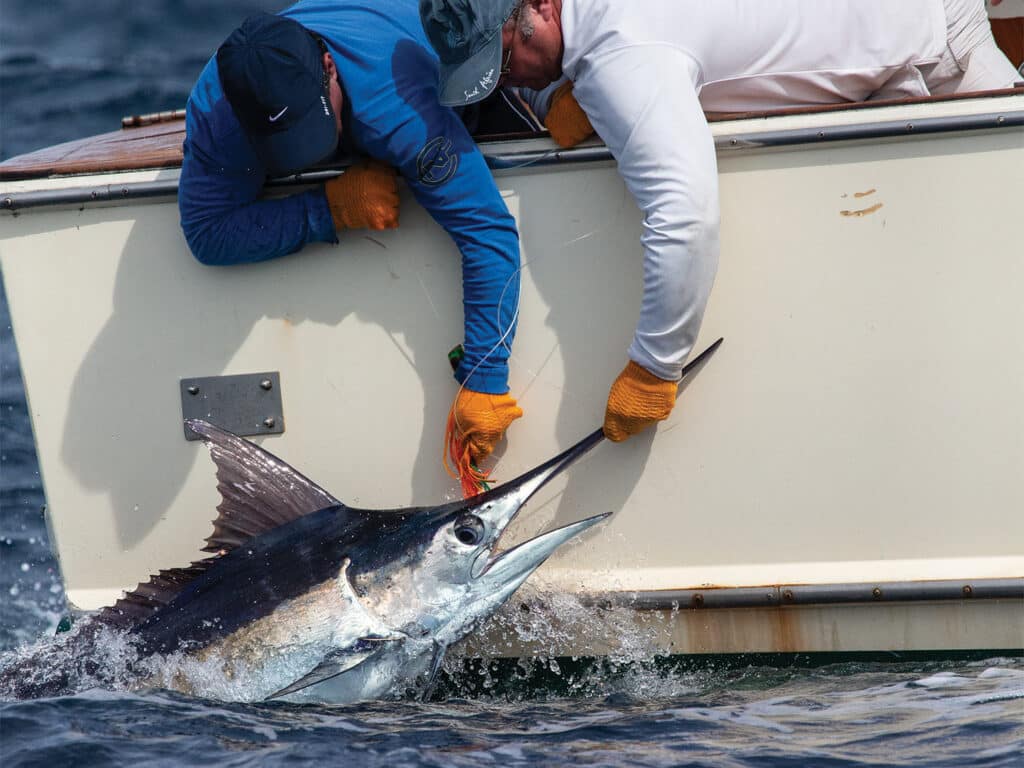
The first major theory why fish aggregate on FADs is known as the food-chain hypothesis, which proposes that large predatory fish are actively foraging upon the smaller fish, which are aggregating at the floating objects, and thus, an entire food chain builds up with the FAD as the foundation. The hypothesis was originally proposed for mahimahi, which also associate with FADs, but was extended to tuna and marlin. The large diversity of fish that are found associated with FADs would seem to support this theory; however, there is little evidence that there are enough small baitfish present to support a 20-to-40-ton school of tuna, which needs to eat approximately 5 percent of their body weight per day. Furthermore, the presence of predatory fish has been observed at coastal FADs that have little or no prey fish associated. In one study, predatory fish—in this case, amberjack—were regularly found at the FAD but were never observed actively predating the smaller fish. On the other hand, blue marlin and tunas have been observed actively engaged in hunting activities when associated with a FAD.
The second, and my preferred, theory is the indicator-log hypothesis. This articulates that fish of all sizes are attracted to floating objects because they tend to accumulate in waters that are relatively rich. These natural floating objects often originate in rivers with a high export of land-based nutrients, or they drift to rich frontal zones. Frontal zones, or convergent boundaries, occur due to currents, upwellings and eddies, and represent critical areas of importance to many fish species. In the Atlantic Ocean, we have an abundance of sargassum, and the dynamics of winds, currents and eddies sometimes converge this sargassum into weed lines.
A book published in the 1990s by Dr. Andrew Bakun explains this convergence as an “ocean triad,” where the area under a floating object is enriched by nutrient-filled water, concentrated due to the surrounding convergent environment and retained within that area. The prey species are drawn in by the planktonic food available, and the predators are drawn to the prey. Fish may also be partial to this particular environment for spawning, because their eggs and resulting larvae would be retained and have the necessary nutrients and food to grow until they are large enough to swim off on their own. We know this is true of many pelagic species. One indicator that this hypothesis applies to predators is the observation that tunas associated with man-made FADs—which are often artificially seeded in areas that are considered low in productivity—are in poorer condition, with empty stomachs and lower fat content than their free-school counterparts.
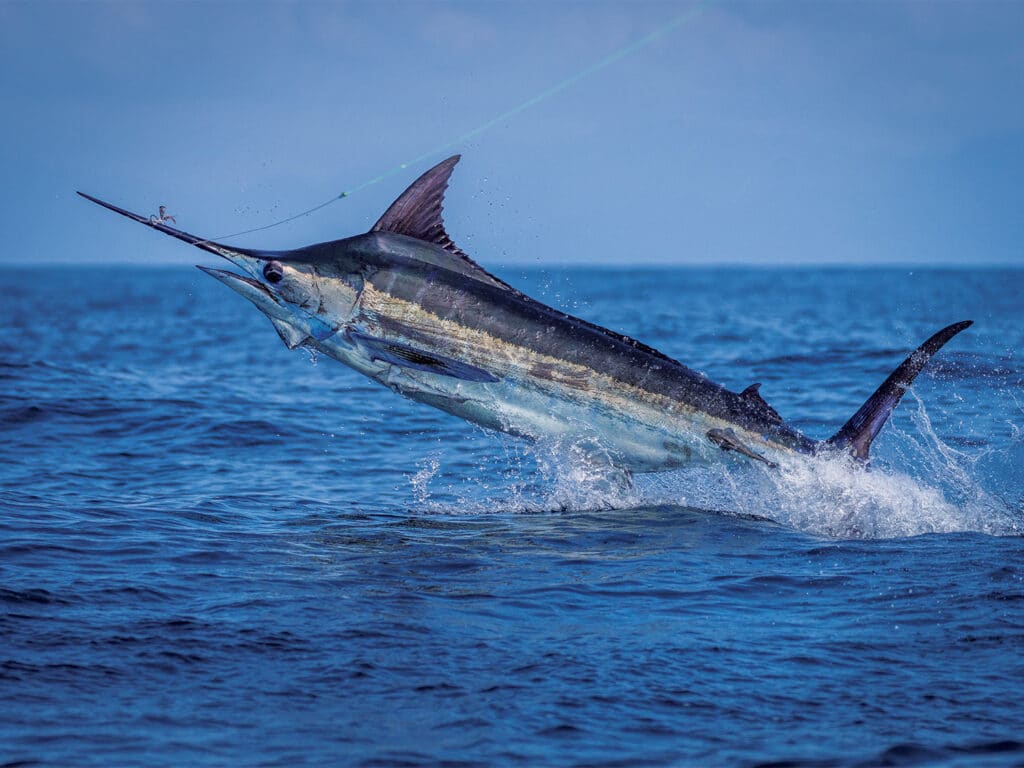
This suggests that the fish are being tricked into thinking that they are being drawn or led into rich waters when they actually are not, also known as the ecological-trap theory. This is the primary argument that FADs may negatively impact fish communities if placed in a region where convergence rarely occurs. Imagine a fish that finds itself under a moored FAD on a flat bottom where winds and currents do not produce sustained convergent boundaries, where you would not find grouped floating objects like a weed line.
Read Next: The Dominican Republic has an extensive FAD fishery.
This fish has evolved to think this is a prime spawning area where floating objects have converged when, in fact, the spawning products will not have the necessary environment for success and the spawn is wasted. Because this is all still theory, we do not know if a poorly placed FAD could negatively impact spawning success of FAD-associated species, but the concept is one of the potential drawbacks to deploying networks of FADs in low-productivity regions.
The third main theory pertaining to schooling fish such as tunas is the meet-up-point hypothesis. This hypothesis states that fish seek out anomalies in the pelagic environment in the hope others will do the same, and subsequently form larger schools. Studies have found some fish schools at FADs have a larger range of sizes compared with free-swimming schools, suggesting the mechanism for schooling around a FAD is different from—or the impulse is stronger than—fish that are free-swimming. Additionally, FAD-caught tuna are smaller than free-schooling tuna, and this phenomenon is particularly true for skipjack and yellowfin, which is problematic from a management perspective.
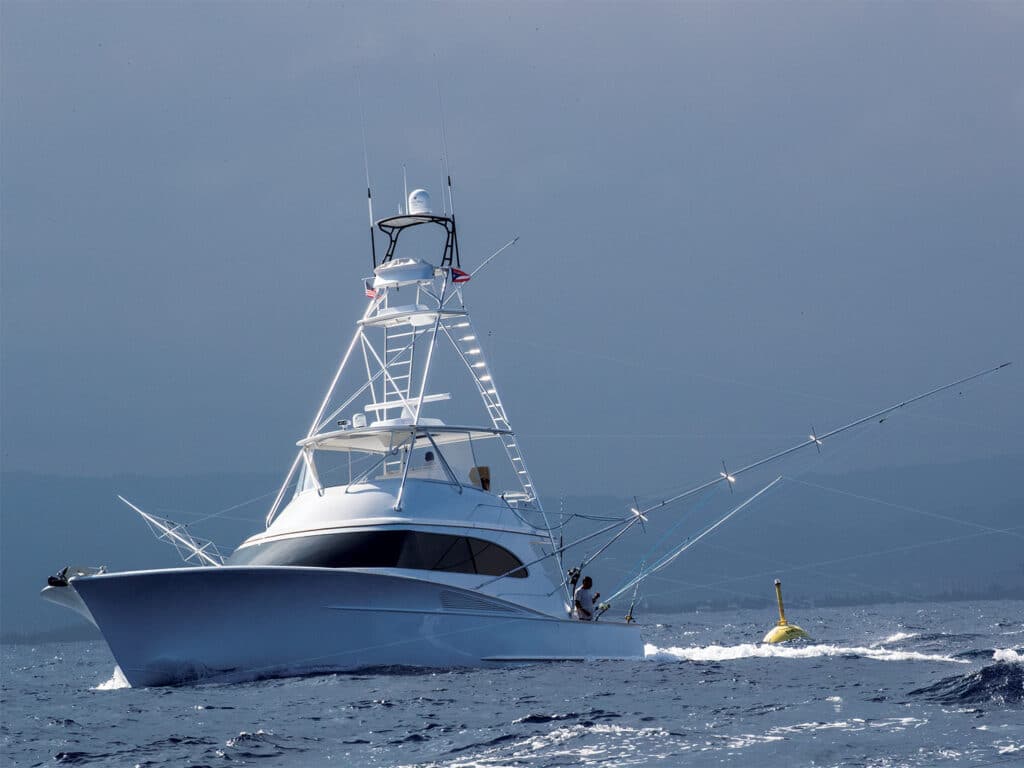
A study conducted on bigeye scad, better known to anglers as goggle-eyes, found individuals were more likely to arrive at the FAD alone or in small groups, then leave the FAD in larger groups. Another study compared two identical FADs and found that tunas preferred the FAD with a larger school already underneath. This meet-up hypothesis does not fit well with marlin species, however, because they typically do not form large schools throughout their lives, although it makes sense for the schooling prey species marlin like to eat. These small pelagic prey species have different nutritional requirements, movement patterns and general life-cycle characteristics from predators, so their main motivations for associating with a floating object could be different.
FADS and Blue Marlin
We know that blue marlin are strongly FAD-associated. Even when other predator species are present, blue marlin show a strong tendency to remain in the relative area of a FAD, whether drifting or moored. In some regions of the world, directed FAD programs have been developed in partnership with local governments, management agencies and fishing organizations, while in other regions, the fishing community has funded and deployed FADs on its own. In Hawaii, FADs have been in place since the late 1970s and over time have adapted new designs to increase the longevity and effectiveness of the structures. This substantial program, with more than 50 FADs deployed throughout the state’s coastal waters, has successfully increased commercial catches of valuable tuna species and increased sport-fishing opportunities. Another important aspect of Hawaii’s FAD program is its partnerships with management and research institutions to promote a better understanding of local fish populations and fisheries.
In recent years, a FAD-development program was put in place in the Gulf of Mexico, about 60 to 80 miles off the Florida Panhandle. The Okaloosa FAD program saw buoys deployed in 2020 to improve fishing opportunities. The plan has been an overall success, although there have been issues keeping the FADs anchored to the bottom, which is an issue with virtually all moored FADs. The Army Corps of Engineers approved this project, which is a requirement to deploy FADs in US waters. Maintaining consistent monitoring programs and obtaining the proper permits are critical to developing a sustainable FAD network while also allowing the opportunity to learn more about best practices for FAD creation and deployment.
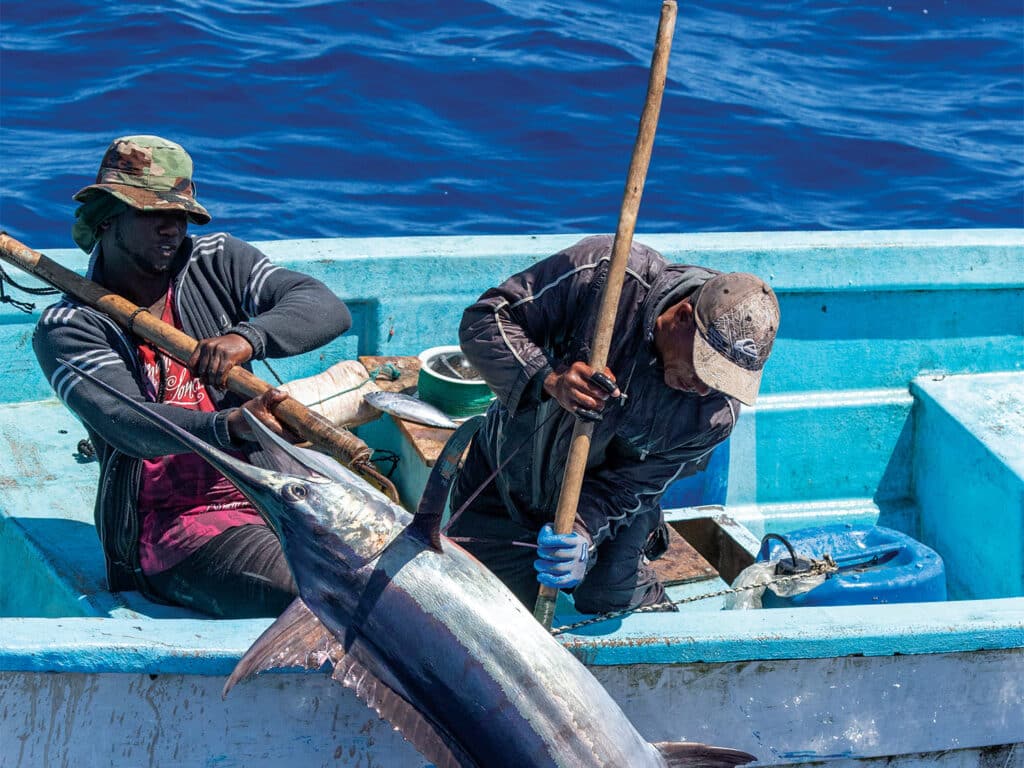
In the eastern Pacific off Central America, FADs deployed on seamounts have become commonplace. These are typically placed near a seamount under the surface by private individuals. In some areas, they have dramatically increased the catch rates of blue marlin as well as lengthened the blue marlin season. These FADs have become so common that blue marlin migrations have potentially been impacted by the extra availability of food at the seamount FADs. Preliminary satellite-tagging results suggest blue marlin no longer migrate long distances in the region, with individuals now just bouncing from seamount to seamount instead.
In the Caribbean, moored surface FADs are in use around many islands, including the billfish hotspots of the Dominican Republic and Puerto Rico as well as Saint Lucia, Guadeloupe and Martinique. These FADs have been deployed for both commercial and recreational fishing improvements, sometimes placing FADs near to shore in order to allow smaller commercial vessels access to tuna and billfish. Catch rates in each of these locations have been dramatically increased for blue marlin, with recent reports from Saint Lucia’s tournaments of double-digit catches in a single day.
In international commercial fisheries using drifting FADs, the materials used, and also the abandonment of FADs, are major problems. These FADs are left to drift the oceans until they wash up on the shore or sink into the depths. If the FAD is made with old nets, this netting can continue to “ghost fish,” killing fish, turtles and marine mammals along its entire path. When these FADs eventually wash up, they can destroy coral reefs and impact beaches and other critical habitats. Additionally, FAD fisheries complicate the management process because they bias fish-abundance estimates due to the increased density of fish.
The recreationally deployed moored FADs are less of a problem in terms of pollution. A moored FAD network designed and implemented properly likely has little impact on the surrounding environment, especially when deployed in a region where upwelling and convergence happen naturally. One major issue seen in some areas, such as the Dominican Republic, is the ownership disputes over fish caught at the FADs. FADs were deployed for both commercial and recreational fishing; however, the small commercial boats saw those fish as theirs. This led to clashes on the water with stories of hooked blue marlin being cut off by commercial boats and a sense of distrust on both sides.
Overall, the increased use of FADs in both commercial and recreational fishing industries has resulted in consistently increased catches and fishing opportunities. More research is needed to better understand how FAD presence impacts fish species, and significant efforts need to be made to ensure FAD fisheries are properly managed and implemented.



